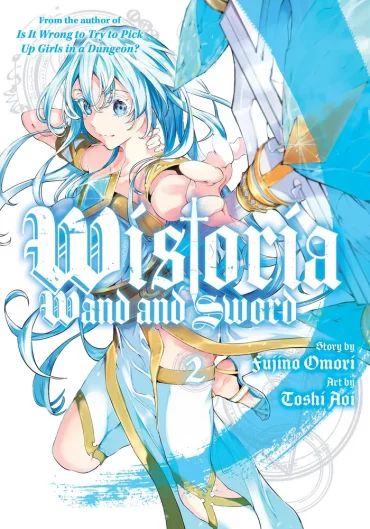Wistoria: Wand and Sword Volumes 2 and 3 Review
Back in January, I reviewed Volume 1 of Wistoria: Wand and Sword, a new series published by Kodansha and written by Is It Wrong to Try to Pick Up Girls in a Dungeon? author Fujino Omori. While the first entry didn’t offer anything particularly original for the shonen genre, it’s time to see if that changes with a couple more volumes.
As we reunite with protagonist Will, we find the students of Regarden Magic Academy preparing for the Grand Magic Festival. In this event, students face off against each other in the hopes of being scouted to become a Magia Vander. To begin with, Will has no intention of joining, having taken part in the Biannual Magic Festival in his second year and being mocked for his lack of magic talent.
However, one evening the tavern Will works at part-time is visited by top student Julius, who mocks Will and the dwarfs that run the place. In the end, Julius challenges Will to prove himself in the Grand Magic Festival, where if he wins, Julius will apologise to the dwarfs. Should he lose, Julius demands that Will leave the academy.
To take part in the event, you need a party of three so Will teams up with his only friend Colette who then invites Sion, a student Will saved previously in the dungeon. Together, they aim to show they’re a force to be reckoned with, but naturally, Julius has set plenty of traps to try and prevent Will’s party from advancing…
Volume 3 continues the Grand Magic Festival arc, with Will facing off in a duel with Julius one-on-one. This allows artist Toshi Aoi to show off their skills, but there’s not a great deal to talk about in terms of the plot. But I think that’s okay because Wistoria as a battle shonen will live or die based on how the fights are depicted.

Back in the first book, it was clear that Aoi had a good eye for knowing how to depict fight scenes. However, because the series was still firmly in the setting-up stages it was unclear how often we’d get to see Aoi’s talents at work. So I’m happy that both Volumes 2 and 3 have capitalised on showcasing the action, particularly in something as grandiose as the Grand Magic Festival where you have spells flying around left and right. It’s impressive output for a rookie mangaka and leaves me eager to see their abilities continue to grow as the series goes on.
However, a downside of leaping straight into a battle arc is that Wistoria still hasn’t done anything to stand out in this crowded genre. Neither Will nor Colette stand out as the main characters and even Sion, who’s a rival turned comrade, and Julius as an antagonist feel quite shallow. It would have been better if Volume 2 had spent more time developing the cast first, so we cared about what drives them forward. Will’s the only one whose motivations I can understand, but even he is a fairly simplistic character. That’s not a bad thing for his personality; it’s very like the author Fujino Omori to write him like this as it’s similar to Bell in DanMachi, but while that will entice long-term fans of his to read the series, it’s just not going to cut it for the average shonen reader.
It looks like Volume 4 introduces a set of new characters to the mix for a new arc, so I’m hopeful that will work toward fixing some of my criticisms. Of course, that may be a little too late for the majority of readers but I like Omori as a writer and Aoi’s art, so I’m willing to continue with it because of how much I enjoy those elements.
As previously mentioned, Wistoria: Wand and Sword Volumes 2 and 3 come to the West thanks to Kodansha where they continue to be translated by Alethea and Athena Nibley. The lettering has changed hands from Sara Linsley to AndWorld Design and while it’s a shame to have a design studio credited instead of a person, I can at least say there are no problems with the quality of the lettering itself. Volume 4 of the series has already been released and #5 is scheduled for an English release in July, so there continues to be a lot of this series coming out.
Overall, Wistoria: Wand and Sword hasn’t managed to shake off all of its problems but this continues to be an interesting series if you’re a fan of the author. Coupled with some excellent artwork, there’s plenty to enjoy here, but there are unfortunately a few issues as well. Your mileage will vary depending on what you’re hoping to get out of it.
Our review copies from Kodansha were supplied by Diamond Book Distributors UK.


